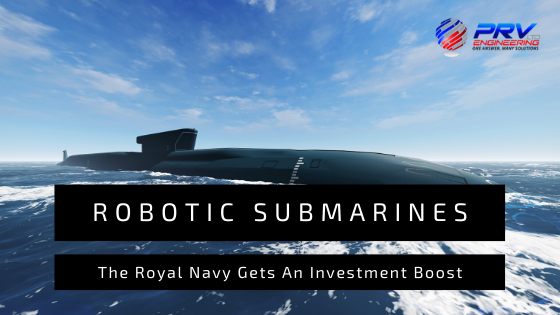
Said to be bigger than Boeing’s Orca eXtra Large Unmanned Underwater Vehicle (XLUUV), this new unmanned robotic submarine is setting the bar high. It’s a test sub that will primarily be used to further study ways in which to build and operate robotic submarines.
The Importance Of Submarines
Very few people will argue that submarines are possibly one of the most important vessels in any naval fleet. Some of the major benefits include the following:
- they can go nearly anywhere in the world almost undetected
- their ability to stay at sea for months at a time
- provide tremendous tactical and strategic firepower
It’s safe to say that naval commanders consider modern submarines as an extremely valuable asset. However, it does come with a big caveat and that comes in terms of budget. A single submarine can easily cost billions in development, operating costs and training of sailors and officers.
Possible Uses For Robotic Submarines
Considering the massive investment, most modern submarine fleets are much smaller than those of the last century. Another downside is that they are often too valuable to place in harm’s way and will only be used if absolutely necessary.
To counter these pitfalls, the Royal Navy wants to use robotic submarines to act as back-up for manned boats. They plan to use the autonomous subs for surveillance, reconnaissance, and anti-submarine warfare.
Developing Unmanned Robotic Submarines
To help develop future large unmanned robotic submarines, the Ministry of Defence has awarded an initial £1 million contract through the Defence and Security Accelerator (DASA) organisation. It was made available to MSubs Ltd in Plymouth to investigate building a test submarine with a range of 3,000 nm (3,500 mi, 5,600 km).
The first phase of the development process involves the Royal Navy’s Autonomous Underwater Capability program working with the Navy and the Defence Science and Technology Laboratory (Dstl). Their goal is to determine the feasibility of converting a manned submersible into an autonomous version. The government will provide additional funding if the initial tests prove successful.
Specifications Of The New Robotic Submarines
Measuring 30 m (100 ft) in length, it will be bigger than the Boeing Orca eXtra Large Unmanned Underwater Vehicle (XLUUV). While 30 m may seem small compared a 97 meter (318 ft) Astute-class submarine, large unmanned robotic submarines are essentially full-sized boats. The biggest difference is that all the crew spaces have been removed to improve stealth and range.
As a result, the autonomous subs will be more stealthy and able to leave and return to the dock autonomously on voyages of three months. With improvements in technology and engineering, these subs will eventually take over many duties of manned craft. This will free up manned subs to focus on more important missions while saving the government money as robotic submarines will be cheaper to build and operate.
The Future Of Naval Fleets Using XLUUVs
Admiral Tony Radakin, The First Sea Lord announced the development contract at the Underwater Defence & Security Symposium in Southampton. Forbes reported that Admiral Radakin said that Britain has no plans on expanding its attack or missile submarine fleets but hopes that robotic submarines could help expand the undersea fleet whilst increasing its capabilities.
Admiral Radakin had this to say: “I am enormously excited about the potential for remotely piloted and autonomous systems to increase our reach and lethality, improve our efficiency and reduce the number of people we have to put in harm’s way. These XLUUVs are at the forefront of underwater systems technology; UK technological developments such as this will be key to the Royal Navy maintaining its battle-winning edge in the underwater environment.”
Recommended Article: ‘Sea Hunter: Autonomous Vessels Hunting Submarines’
Conclusion
With technology advancing at a rapid pace, the future of maritime exploration and naval warfare could take on a whole new look. Countries across the world are working on advanced projects covering drones, robotics, autonomous vessels and vehicles among others.
While the focus is on the Royal Navy, some of this technology can also see be implemented to further explore our oceans, manage oil spills and help clean oil rigs and boats. Just look at how robotics have changed the oil and gas industry.
If you liked reading this article, follow PRV’s weekly blog and join the conversation on Twitter and Facebook. For more information on the products, services and industries that PRV specialise in, please visit their website.
This site uses Akismet to reduce spam. Learn how your comment data is processed.


 Mail:
Mail: 




Leave a Comments